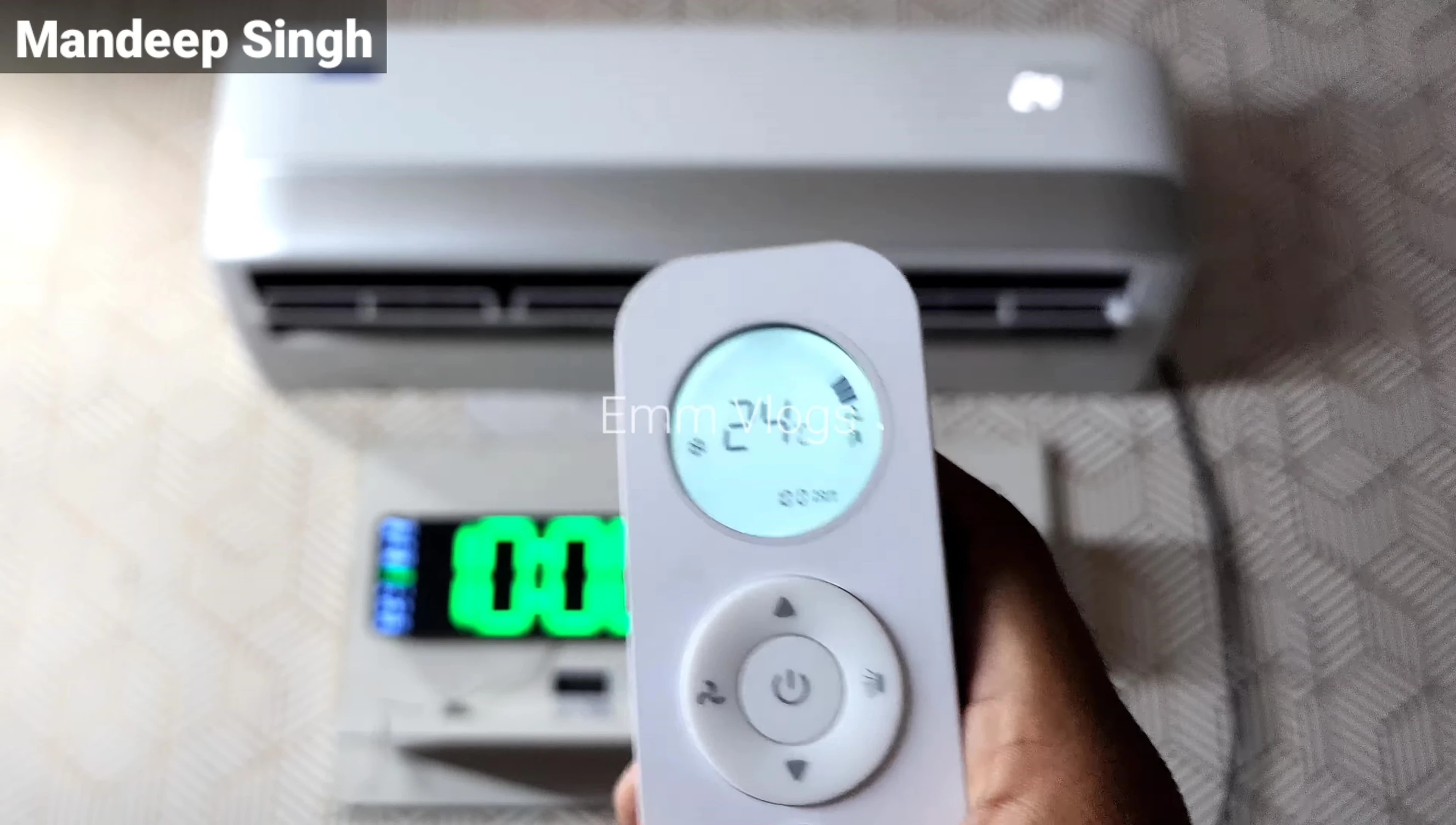This article presents a comprehensive 12-hour continuous run test and review of a 1.5-ton Blue Star 5-star inverter air conditioner. The test meticulously tracked energy consumption, voltage stability, and temperature fluctuations both inside and outside the test room under real-world conditions. Data was collected at regular intervals, providing a detailed picture of the AC's performance and energy efficiency throughout a prolonged period of operation. Factors influencing energy consumption, beyond the AC unit itself, are also considered.The goal of this review is to provide readers with a realistic assessment of the Blue Star inverter AC's capabilities. We examine its ability to maintain a set temperature over an extended duration, analyze its energy consumption patterns under varying external temperatures, and highlight the impact of factors like voltage stability on overall performance. This in-depth analysis aims to help consumers make informed decisions when choosing an energy-efficient air conditioning unit.
Pros And Cons
- Maintained desired temperature (26°C) in a room even on a hot day (outside temperature reached 42.7°C)
- Saved electricity during cooler parts of the day (lower electricity consumption observed from 4 PM to 10 PM)
- Consumed more electricity during the hottest part of the day (higher consumption between 1 PM and 4 PM)
Read more: Nuwave PIC Titanium Induction Cooktop Review: A Mixed Bag of Features
Test Setup and Initial Readings
A 1.5-ton Blue Star 5-star inverter AC was tested for its energy consumption over 12 hours of continuous operation. The AC was set to 26°C with auto swing and medium fan speed. The initial room temperature was approximately 33-34°C. The initial energy meter load showed a gradual increase as the AC began cooling.

The input voltage was monitored, showing a slight initial drop due to increased load. It was adjusted to maintain a stable 230V. The test began at 10:00 AM.

Performance Monitoring and Key Factors
The AC's performance was checked four times during the 12-hour test: at 1:00 PM, 4:00 PM, 7:00 PM, and 10:00 PM. Readings included the outside temperature, the AC's load in watts and amperes, and the room temperature.

It's important to note that AC performance isn't solely determined by the AC unit itself but also depends on external factors: room size, insulation, number of occupants, sunlight exposure, appliance heat output, and even the location of both the indoor and outdoor units.

3-Hour, 6-Hour, and 9-Hour Readings
At 1:00 PM (3 hours), the outside temperature was 42.7°C, the room temperature was 26.3°C, the load was 730 watts, and the ampere was 3.25. 2.02-2.03 units of electricity were consumed.

At 4:00 PM (6 hours), the outside temperature had slightly decreased to 40.6°C, the room temperature remained at 26.5°C, the load was around 730 watts, and the ampere was 3.3. A total of 4.31 units were consumed, with 2.29 units consumed in the 3 hours between the 1 PM and 4 PM readings.

At 7:00 PM (9 hours), the outside temperature dropped further to 38.5°C, and the room temperature stayed at 26°C. The load decreased to approximately 430 watts, and the ampere was around 2.1. Total energy consumption reached 5.90 units, with only 1.59 units consumed in the preceding 3 hours.

Final Results and Conclusion
After 12 hours, the outside temperature was 36.9°C, the room temperature was maintained at 26°C, and the AC load dropped to approximately 420 watts and 2 amperes. Total energy consumption was 6.94 units (approximately 7 units).

The AC consumed the most electricity between 1:00 PM and 4:00 PM (2.29 units), likely due to the peak outside temperature. The least consumption occurred between 7:00 PM and 10:00 PM (1.04 units), reflecting lower outside temperatures. This demonstrates the energy-saving benefit of inverter technology, particularly when used over longer periods. The average hourly consumption was 0.57 units.

The Blue Star 5-star inverter AC performed well, maintaining the desired temperature throughout the 12-hour test while demonstrating effective energy saving as the outside temperature dropped. The initial high consumption highlights the importance of maintaining consistent voltage with a voltage stabilizer.
